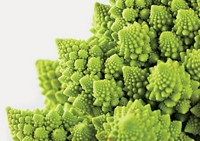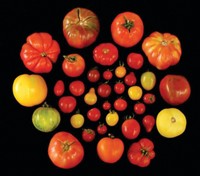Advertisement
Grab your lab coat. Let's get started
Welcome!
Welcome!
Create an account below to get 6 C&EN articles per month, receive newsletters and more - all free.
It seems this is your first time logging in online. Please enter the following information to continue.
As an ACS member you automatically get access to this site. All we need is few more details to create your reading experience.
Not you? Sign in with a different account.
Not you? Sign in with a different account.
ERROR 1
ERROR 1
ERROR 2
ERROR 2
ERROR 2
ERROR 2
ERROR 2
Password and Confirm password must match.
If you have an ACS member number, please enter it here so we can link this account to your membership. (optional)
ERROR 2
ACS values your privacy. By submitting your information, you are gaining access to C&EN and subscribing to our weekly newsletter. We use the information you provide to make your reading experience better, and we will never sell your data to third party members.
Biological Chemistry
Why Supermarket Tomatoes Taste Bland
Plant Biology: Because of a genetic mutation, commercial tomatoes sacrifice flavor for uniform color
by Sarah Everts
June 28, 2012
The truism that “beauty is only skin deep” certainly applies to the perfectly red but rather bland tomatoes often found on supermarket shelves. Researchers have now found the genetic basis of the fruits’ attractive looks but flawed flavor. The discovery could help breeders select for tastier tomatoes.

The flavor failure of supermarket tomatoes is because of a gene called SlGLK2, says James J. Giovannoni, a plant biologist at Cornell University. Giovannoni just published the discovery of SlGLK2 in Science with Ann L. T. Powell of the University of California, Davis, and their colleagues (DOI: 10.1126/science.1222218).
In most store tomato varieties, the SlGLK2 gene has a mutation in the form of an extra DNA base, Giovannoni explains. The extra base disrupts the gene’s sequence, causing its protein to be truncated and thus inactive.
Unfortunately for tomato consumers, the protein encoded by SlGLK2 is essential for activating the production and distribution of chloroplasts in the developing fruit. Chloroplasts are organelles that harness light energy for sugar production. That means tomatoes carrying this mutation have less sugar content, Giovannoni says. Furthermore, choloroplasts are where many tomato flavor aromas are produced.
For 70 years, tomato breeders have preferentially selected tomatoes with this mutation—called “uniform ripening”—because it does confer an aesthetic advantage: The color of unripe tomatoes is a uniform light green, and the color of ripe tomatoes is a uniform red “from top to bottom,” comments Harry J. Klee, a plant biologist at the University of Florida, Gainesville.
Tomatoes that lack the mutation have uneven patches of dark green pigment in the unripe fruit—presumably a consequence of those extra chloroplasts—whereas the ripened fruit is red but can also still have green and yellow sections, Klee adds. “These fruits don’t look as nice, but they taste good.”
Consumers need to “accept the fact that tomatoes are not pristinely beautiful objects, or they are going to have to accept the hit in flavor and sweetness,” Klee says.
What about having it both ways?
“We won’t be able to fine-tune the tomato’s characteristics even if we know how,” Klee says, because that would require genetic engineering, which consumers don’t want.
However, Giovannoni thinks breeders could use the discovery without going down the path of genetic engineering. “The bottom line is that because you know the gene that underlies the trait, breeders can monitor the gene in young plants bred through traditional methods, and then select for variations of the SlGLK1 gene that are more to our liking,” he explains. “Of course that’s easy for me to say. Now it’s up to the breeders.”






Join the conversation
Contact the reporter
Submit a Letter to the Editor for publication
Engage with us on Twitter